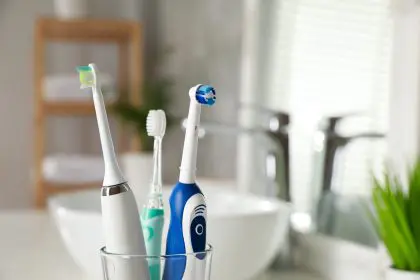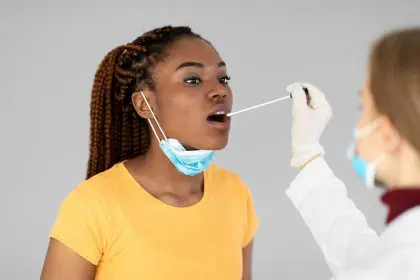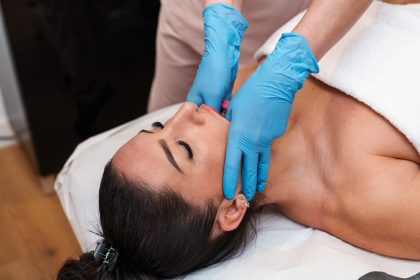Dental professionals notice these common errors that compromise your smile’s future
Why tooth brushing remains the foundation of oral wellness
Proper tooth brushing stands as the cornerstone of dental health, yet most people perform this daily ritual incorrectly. The consequences extend far beyond just fresh breath, affecting everything from gum health to heart disease risk. The simple act of brushing serves as the first line of defense against plaque, a sticky bacterial film that constantly forms on teeth and leads to decay, cavities, and periodontal disease when left unchecked.
Plaque begins forming immediately after brushing, with bacteria multiplying rapidly in the warm, moist environment of the mouth. These microorganisms feed on food particles, especially sugars and starches, producing acids that erode tooth enamel and irritate gum tissue. Within just 48 hours, plaque can harden into tartar, a calcified deposit that only professional cleaning can remove. This transformation highlights why consistent, proper brushing technique matters more than most realize.
The mouth-body connection receives growing recognition in medical circles, with oral bacteria linked to systemic conditions including cardiovascular disease, diabetes complications, and pregnancy issues. Research indicates that the same inflammation processes driving periodontal disease may contribute to inflammation throughout the body. This relationship transforms tooth brushing from a cosmetic habit into an essential health practice with implications far beyond the mouth.
The morning brushing ritual most get wrong
The debate between brushing before or after breakfast reveals significant misunderstandings about oral biology. While intuition suggests brushing after eating removes food particles, science indicates otherwise. Overnight, bacteria multiply rapidly in the mouth, creating a thick biofilm by morning. This bacterial load produces acids that weaken enamel, making teeth particularly vulnerable to damage from acidic breakfast foods like orange juice or coffee.
Brushing immediately before breakfast offers several advantages. First, it removes the bacterial buildup from nighttime, reducing the acid production that occurs during eating. Second, the fluoride from toothpaste creates a protective coating that strengthens enamel against acidic foods. Finally, morning brushing stimulates saliva production, activating this natural protective mechanism before food introduction.
For those who prefer brushing after breakfast, timing becomes crucial. The eating process temporarily weakens enamel through acid exposure, making immediate post-meal brushing potentially damaging. Waiting 30-60 minutes allows saliva to neutralize acids and remineralize enamel, creating a safer brushing environment. This waiting period, while inconvenient for busy mornings, provides significant enamel protection that most brushers overlook.
The nighttime bacterial environment creates different oral conditions than daytime. During sleep, saliva production decreases dramatically, removing a key protective mechanism against bacteria. Without this natural cleansing flow, bacteria multiply more rapidly, creating the perfect environment for decay to accelerate overnight. This biological reality makes evening brushing even more critical than morning cleaning for long-term dental health.
The technique difference that transforms results
The 45-degree angle approach represents the foundation of effective brushing technique. Positioning bristles at this specific angle allows them to reach slightly beneath the gumline where plaque accumulates most dangerously. Most people position their brush flat against teeth, missing this crucial area and leaving behind the bacteria most responsible for both decay and gum disease. This small adjustment dramatically improves cleaning effectiveness without requiring additional time or effort.
Brushing pressure often veers toward extremes, with many applying excessive force that damages gums and enamel. The ideal pressure should barely bend bristles, feeling gentle against gum tissue. Electric toothbrushes with pressure sensors can help establish this proper feeling, but even manual brushers can practice by holding the brush with just fingertips rather than a full-handed grip. This lighter touch actually cleans more effectively while preserving both tooth and gum tissue.
The recommended two-minute duration becomes more manageable when dividing the mouth into quadrants, spending 30 seconds on each. Most people brush for less than one minute total, missing significant surface area and leaving plaque behind. Mental visualization of quadrants—upper right, upper left, lower right, lower left—creates a systematic approach ensuring complete coverage. This methodical system transforms brushing effectiveness without extending overall time commitment significantly.
The overlooked significance of bristle choice affects cleaning results dramatically. Soft bristles clean more effectively than medium or hard options, contrary to popular belief. Firmer bristles damage gum tissue and create microscopic scratches on enamel that trap bacteria. These scratches accumulate over time, making teeth more susceptible to staining and decay. Soft bristles flex better to reach between teeth and below the gumline while preserving dental tissues.
Brushing tools that actually make a difference
Electric toothbrushes demonstrate superior plaque removal in numerous studies, particularly for people with limited dexterity or inconsistent technique. The rapid oscillations or rotations perform thousands more cleaning movements than manual brushing, reaching areas frequently missed. Most importantly, the built-in timers ensure the full recommended two minutes, addressing the common problem of abbreviated brushing sessions that leave significant plaque behind.
The brush head size affects cleaning ability significantly, with smaller heads reaching difficult areas more effectively. Large brush heads often miss the back surfaces of molars and other tight spaces where decay frequently begins. A brush head covering one to two teeth at a time provides optimal maneuverability, particularly for reaching the inner surfaces of front teeth and behind the last molars. This smaller size proves especially important for people with smaller mouths or crowded teeth.
Toothpaste selection makes meaningful differences beyond just breath freshening. Fluoride content remains the most important component, strengthening enamel against acid attacks through remineralization. For sensitive teeth, potassium nitrate or stannous fluoride formulations reduce nerve stimulation while still providing protection. Tartar control versions contain tetrasodium pyrophosphate that disrupts the hardening process of plaque, though they cannot remove existing tartar.
Replacement timing of brushes or electric heads significantly impacts cleaning effectiveness. After approximately three months of use, bristles splay outward, reducing their ability to clean properly between teeth and at the gumline. This degradation occurs gradually, making it less noticeable to users who adjust to declining cleaning performance. Setting regular calendar reminders for replacement ensures consistent cleaning effectiveness throughout the year.
Beyond brushing: The complete oral care system
Flossing addresses the 40% of tooth surfaces that brushing alone cannot reach. These tight spaces between teeth harbor bacteria protected from both brushing and the natural cleansing action of saliva. Daily flossing prevents interproximal decay (cavities between teeth) and removes plaque before it can harden into tartar along the gumline. The C-shaped technique, where floss wraps partially around each tooth, provides more effective cleaning than simply moving floss up and down.
Mouthwash serves different purposes depending on its formulation, complementing brushing rather than replacing it. Therapeutic rinses containing cetylpyridinium chloride or essential oils reduce plaque formation between cleanings, while fluoride rinses strengthen enamel, particularly beneficial for cavity-prone individuals. Timing matters, with rinsing most effective after brushing and flossing to reach newly exposed areas and extend fluoride contact time.
Tongue cleaning removes bacteria that brushing misses, addressing a primary source of breath odor and potential recolonization of tooth surfaces. The tongue’s papillae create numerous hiding places for bacteria, particularly in the posterior third where most odor-causing organisms reside. Dedicated tongue scrapers remove more bacteria than brushing the tongue, working from back to front to avoid triggering the gag reflex while removing the bacterial biofilm.
The ideal sequence integrates these elements for maximum effectiveness. Flossing first removes interdental plaque, making subsequent brushing more effective by allowing better bristle contact with tooth surfaces. Brushing for two full minutes follows, focusing on systematic coverage of all surfaces. Tongue cleaning comes next, removing accumulated bacteria. Finally, therapeutic mouthwash accesses newly cleaned surfaces, extending protection between brushing sessions.
Brushing challenges through different life stages
Children develop brushing habits that last a lifetime, making proper technique crucial despite challenges. Making brushing enjoyable through flavored toothpaste, character brushes, or brushing apps increases compliance, while parental supervision ensures proper technique until at least age seven. The eruption of adult teeth creates new cleaning challenges requiring adjustment of technique, particularly as orthodontic treatment becomes common during adolescence.
Orthodontic appliances create significant brushing obstacles, requiring specialized techniques and tools. Bracket-specific brushes with V-shaped bristle patterns clean more effectively around braces than standard brushes. Interdental brushes reach under wires and between brackets where traditional floss cannot access. Water flossers provide another effective alternative for cleaning around orthodontic hardware, removing food particles and plaque with pressurized water streams.
Pregnancy brings unique oral health challenges including increased inflammation from hormonal changes. Many women experience pregnancy gingivitis, characterized by tender, bleeding gums despite normal brushing. More frequent professional cleanings may become necessary, while extra attention to gentle, thorough brushing helps manage these temporary changes. Some women develop temporary aversions to toothpaste flavors, making unflavored options a helpful alternative during this period.
Senior adults face changing oral conditions that require brushing adaptations. Receding gums expose root surfaces lacking the protective enamel of crown portions, making them more vulnerable to decay and sensitivity. Dry mouth from medications further increases risk by reducing the protective effects of saliva. Modified handles for arthritis sufferers and higher fluoride toothpastes address these age-specific challenges while maintaining effective plaque removal.
Creating sustainable brushing habits that last
Morning routines establish brushing consistency when tied to existing habits rather than time-specific alarms. Linking brushing to a consistent daily action like showering or coffee preparation creates stronger habit formation than time-based reminders. This habit stacking approach proves more sustainable long-term than willpower-based approaches that eventually falter under stress or schedule changes.
Evening brushing faces different challenges, particularly fatigue-based compliance issues. Brushing immediately after dinner rather than just before bed increases adherence for many people, reducing instances of falling asleep without brushing. While not ideal from a protection standpoint, this earlier timing still provides significantly better outcomes than skipping entirely, making it a worthwhile compromise for those struggling with bedtime compliance.
Travel disrupts brushing routines for many people, creating gaps in protection that accumulate over time. Preparing travel-specific oral care kits kept permanently in luggage eliminates the forgetting factor, while travel-sized products remove barriers to maintaining habits away from home. Collapsible brushes, finger brushes for emergencies, and floss picks provide backup options when normal routines prove challenging.
Tracking technology transforms habit formation for many users, with smart brushes providing real-time feedback on coverage, pressure, and duration. These devices sync with smartphone apps to create visual maps of brushing patterns, highlighting consistently missed areas. For those without smart brushes, simple two-minute timer apps or brushing reward systems create accountability and reinforcement that strengthen long-term adherence to proper techniques.
Professional guidance that enhances home care
Dental professionals provide customized technique recommendations based on individual oral conditions that generic advice cannot address. Specific recession patterns, crowding issues, or restoration challenges require personalized approaches to brushing. These tailored instructions, often demonstrated directly on the patient’s teeth, address unique challenges that standard guidelines might miss entirely.
Professional cleaning intervals vary significantly based on individual factors including plaque formation rates, systemic conditions, and genetic predisposition to dental disease. While twice-yearly visits serve most patients adequately, some benefit from quarterly cleaning due to rapid tartar formation or compromised immune response. These personalized intervals prevent irreversible damage while maximizing insurance benefits for necessary treatment.
Between-visit assessment provides valuable feedback for improving home care effectiveness. Plaque-disclosing tablets or rinses temporarily stain bacterial biofilm, revealing areas consistently missed during brushing. This visual feedback, especially when photographed for reference, proves more motivating than verbal instructions alone. Repeating this process periodically at home helps maintain awareness of problem areas requiring additional attention.
The dental hygienist relationship offers ongoing education opportunities often overlooked by patients focused solely on the dentist interaction. Hygienists typically spend more time with patients, allowing for detailed discussion of technique, product recommendations, and specific problem-solving. This relationship provides a non-judgmental space for questions that patients might hesitate to ask the dentist, creating valuable learning opportunities that improve home care outcomes.
Proper tooth brushing represents more than just a daily chore—it serves as a cornerstone of both oral and systemic health with far-reaching implications. By understanding the biological processes involved, implementing correct techniques, and establishing sustainable habits, anyone can transform their dental future. The small adjustments discussed require minimal additional time while providing significant long-term benefits, making proper brushing one of the most efficient health investments available.













